Last week I had the opportunity to fly with Icelandair from Toronto to Glasgow via Keflavik. These flights were part of a return booking made with the airline as part of a trip to Canada.
I will outline what the journey was like at every stage, from check-in, security, the inflight experience, transferring flights in Keflavik and arriving in Glasgow. Aside from that I will also answer the crucial question, was booking this worth the saving compared to flying direct?
Flight Details
Route: Toronto – Keflavik – Glasgow
Aircraft: Boeing 737 MAX 8 and Boeing 767-300
Date Travelled: 15th June 2023
Travel Time: 9 Hours 20 Minutes
Price: £545 (including seats, cabin bag and checked bag)
Checking In
As with most airlines Icelandair offer you the chance to check in online 24 hours before departure, either by using the app or their website.
I checked in using the app approximately 5 hours before and encountered a problem. Icelandair’ check in system claimed I was missing a “regulatory document” and that I would need to go to the desk at the airport to collect a boarding pass, despite this it still issued me with my digital boarding passes on the app.
With this apparent issue I decided to arrive at Toronto Pearson approximately 3 hours before departure.
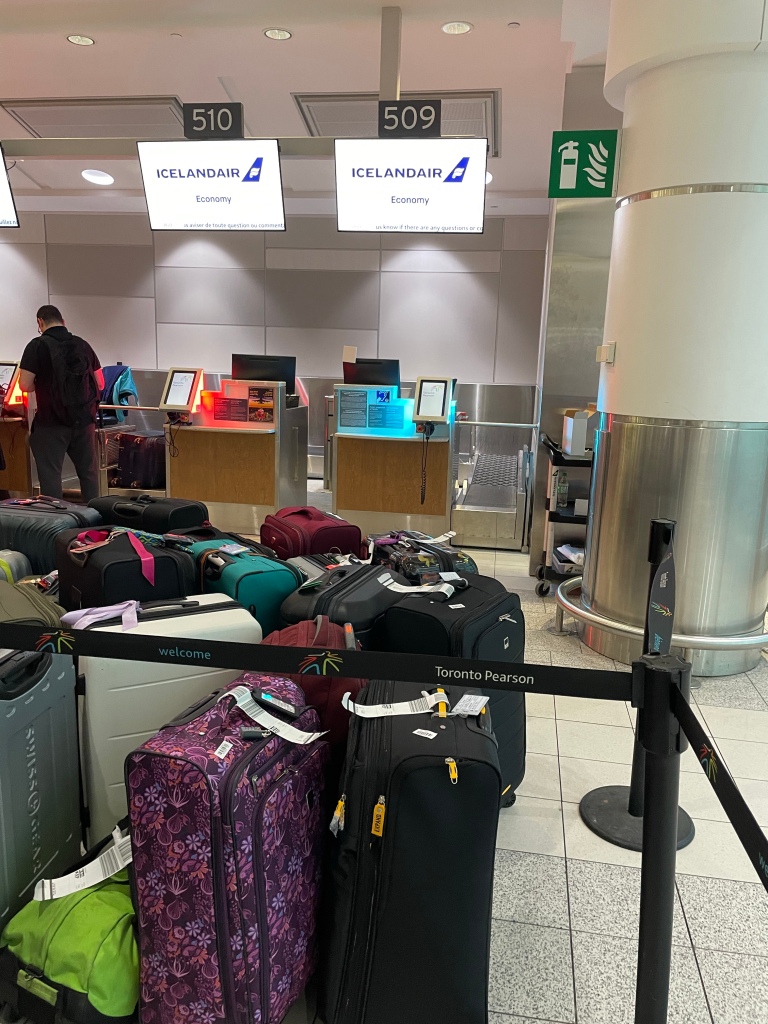
Despite the airport screens claiming that Icelandair were using desks 509-514 only two of these were operational. There was a small queue, but the rate at which this queue moved depended on the passengers being checked in.
I was called forward and explained the situation with the app to the agent. Approximately 30 seconds later my bag was checked and I was informed the app had made a mistake and I could travel.
With a boarding pass for my flights in my hand I made my way to security.
Toronto Pearson Experience
Icelandair depart from Terminal 3 at Pearson airport, which in my experience is the better of the two terminals at the airport.
I went through the smaller of the two security areas in this terminal. The process took approximately 35 minutes which is longer than my other airport experiences on this trip but not unsurprising given the number of flights departing, and that this is the busiest airport in Canada.
Once through security there is not much to keep you occupied, the usual choice of small shops (equivalent to WHSmith in the UK) are available as well as a limited range of places to eat or get a coffee.
One thing I do like about North American airports is that gate information is displayed hours in advance unlike in the UK.
My flight was departing from gate B39 at 2310, and boarding began approximately 30 minutes before departure.
Onboard Flight FI604
Flight FI604 from Toronto to Reykjavik was scheduled to take 5 hours and 30 minutes. For this flight Icelandair use their Boeing 737 MAX 8 fleet, with TF-ICI operating tonight’s flight.
This particular aircraft was 5 years old and was originally delivered to Norwegian Air International, this is important as it means it was not equipped with Wi-Fi, aircraft delivered directly to Icelandair will have Wi-Fi.
This flight offered both Saga Class with 16 seats and economy with 144 seats, I will be in economy on both flights.
Each economy seat comes with an inflight entertainment screen (show below) a blanket and a pillow.
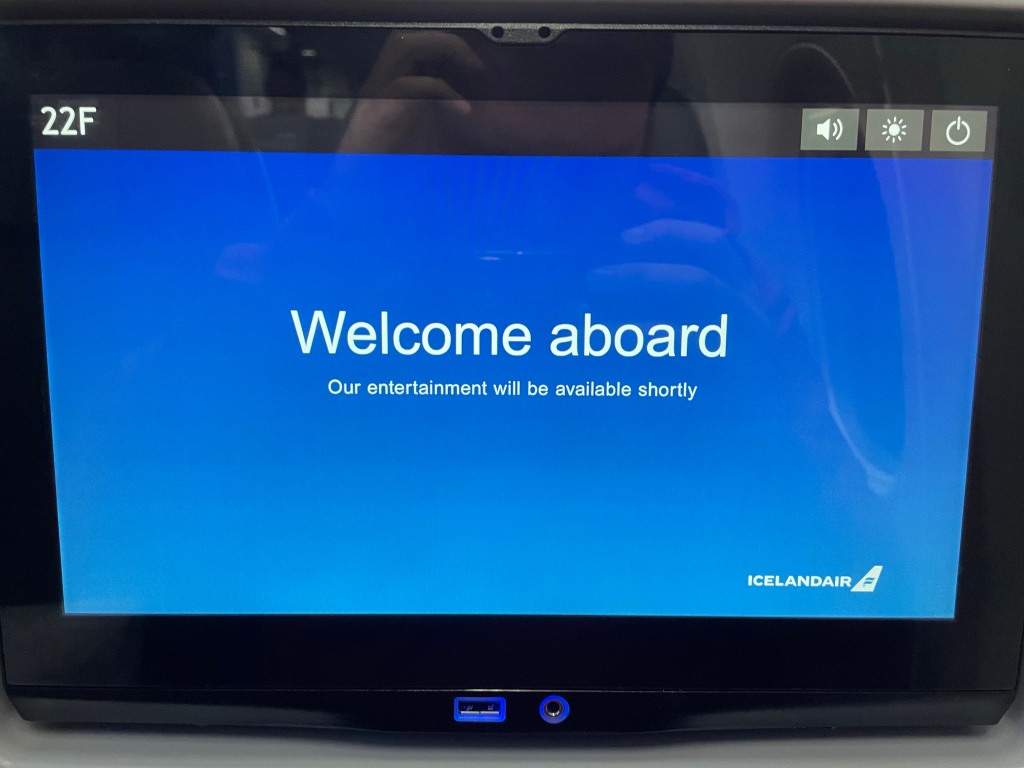
Luckily for me the seat next to me was empty, giving more space to stretch out on this flight, something was was needed.
We departed a little over 30 minutes behind schedule heading for Keflavik.
The seats on this flight were comfortable enough and the entertainment screen was responsive, however, for someone of my height (6ft 3in) I did find legroom was slightly on the short side. Thankfully I was able to spread out more thanks to the empty seat next to me, but another inch of space would have made the seat even better.
I found that I had more legroom on the Boeing 737 MAX 8 fleets of Flair and LYNX Air, who are Canadian low cost airlines.
The crew passed through the cabin twice offering free non-alcoholic drinks to passengers, however, Icelandair do not offer inflight meals like you might find on full length transatlantic flights, this didn’t bother me due to the late departure time of the flight.
We landed into Reykjavik Keflavik at 0846, giving me 89 minutes until my next flight.
Transferring in Keflavik
If like me you are transferring on a flight to the UK from North America there is no need to go through any form of passport control checks in Reykjavik. This makes this transfer exceptionally easy, as North American and UK flights use the same section of the airport, meaning you can walk straight to your next gate.
The walk from my arrival gate “D24” and my departing gate “D31” only took 25 seconds, giving me plenty of time to sit around and do nothing before boarding began.
Boarding a flight here is different from any other airport I have experienced. Staff pass through the queue of passengers and conduct ID and boarding pass checks before you scan your boarding pass at a machine to enter the gate.
My next flight was departing from a remote stand, meaning we needed to take a bus to reach the aircraft.
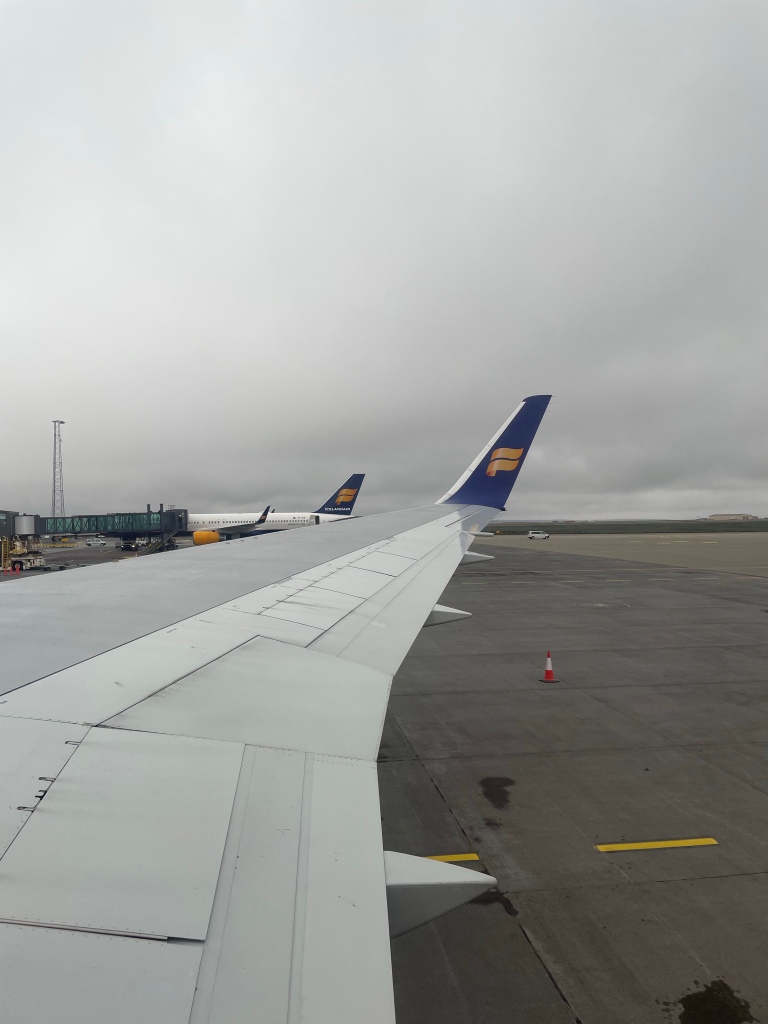
I was one of the first onto the aircraft and quickly found my seat, 26G, onboard this Icelandair Boeing 767-300.
Onboard Flight FI430
As previously mentioned this flight was operated by a 22.8 year old Boeing 767-300 which was originally delivered to Air New Zealand in 2000 – it joined the Icelandair fleet in 2015.
I was traveling in economy on this flight, and the seat can be seen below.
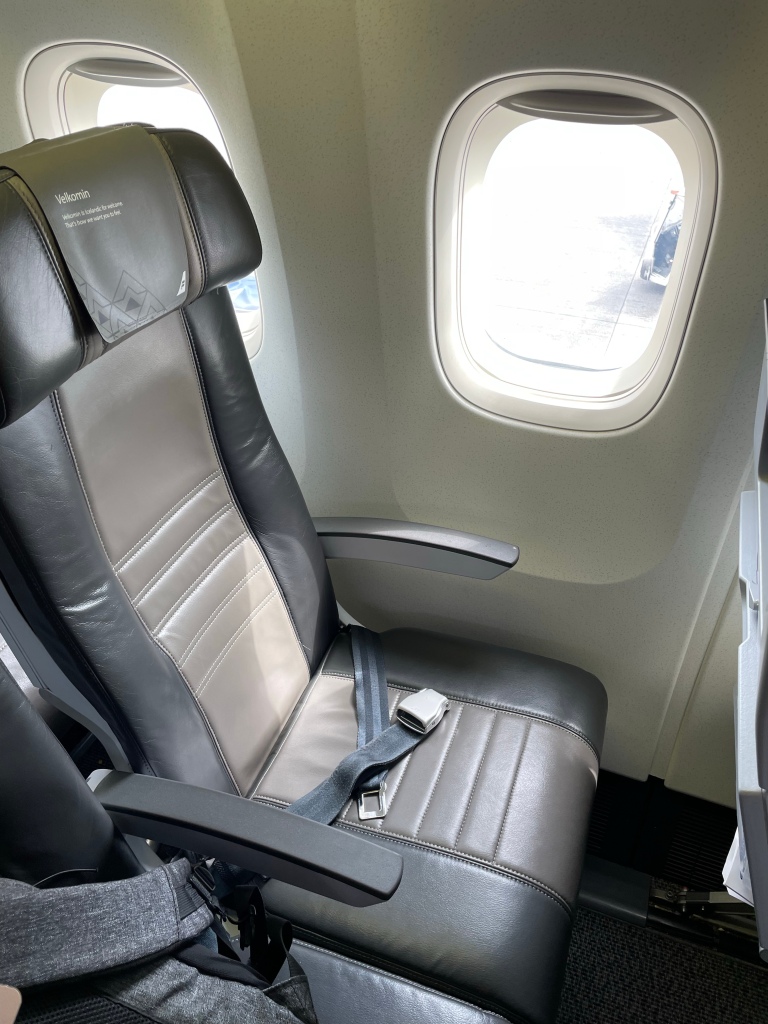
This is not the usual aircraft type for this route, you would normally find Icelandair using the Boeing 737 MAX 8 or Boeing 757-200 on this route. As a result this flight had a significant capacity increase with 262 seats onboard (25 saga and 237 economy).
Despite that, this flight was full and one notable observation was the number of American passengers onboard, they have likely travelled this way due to a lack of American routes direct into Glasgow.
We departed at 1036, which was 21 minutes later than scheduled.
Inflight entertainment screens were available on this flight alongside Wi-Fi priced at 6 euros for the full flight. I purchased the Wi-Fi which worked perfectly during the flight. The crew passed through the cabin offering free non-alcoholic drinks to passengers.
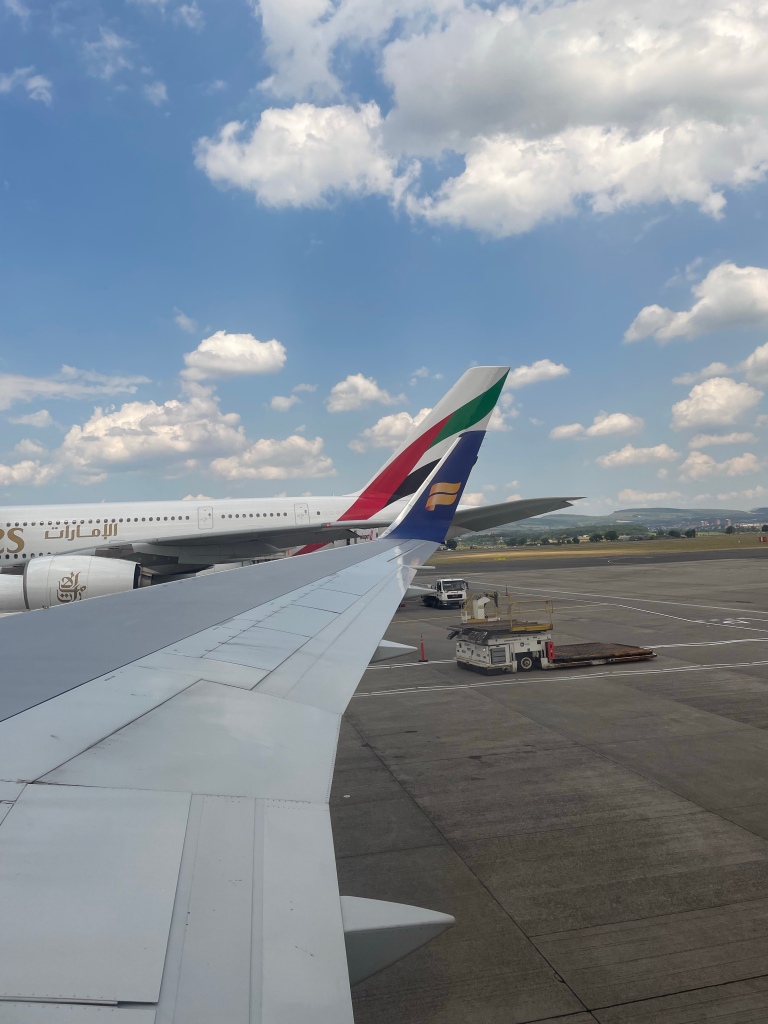
We arrived into Glasgow at 1329, one minute ahead of schedule and arrived on stand 29 at 1334.
Glasgow Airport Arrivals Experience
The first thing required was passing through the UK border, despite the 262 passengers n this flight the queue moved quickly and Glasgow Airport had staff on site to guide passengers to the best place for them (machines for solo travellers and an agent for families).
Baggage from this flight was available from belt 03 and was in the baggage hall for 1350. I quickly found my bag and passed through customs.
Despite landing on an international flight, I was outside Glasgow Airport less than 25 minutes after arriving at our gate. This is the sort of standard that airports across the UK should aim for, London City took longer than this on a domestic flight.
So, Was Icelandair Worth It?
I can safely say that Icelandair was worth flying with, and that I would have no issues flying with them again from Glasgow to North America.
When I consider the price I paid for my ticket and what that included I would say I received excellent value for money on this booking.
Icelandair offer hassle free transfers through Keflavik, and also allow you to add up to seven nights in Iceland as part of your booking at no extra airfare. I took advantage of this when travelling to Canada and found the entire process to be simple and stress free.
For me, despite this, the biggest asset Icelandair have is their cabin crew. On all four flights the crew I encountered were excellent in the service they provide and the frequency in which they communicate with passengers throughout the flight.


One thought on “Is Flying With Icelandair Worth It?”